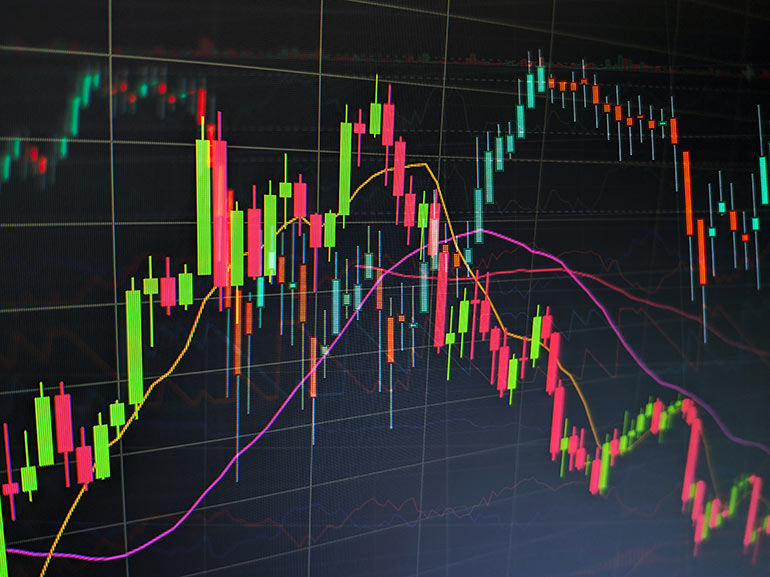Volatility Explained
Volatility might not be a foreign concept to market watchers and traders alike; It has been part of the broader market from the get-go and is even considered a natural part of the financial sector’s movements. However, in the past few months, volatility has increasingly become more of a recurrent motif for the market as it has been making it to the headlines. Accordingly, in this article, we will dive deeper into what volatility means, what causes it and we’ll look into the market sectors most affected by it.

What is Volatility?
While some might think that volatility solely refers to the rapid price drops of a certain financial asset, it in fact, also describes rapid price rises. In other words, volatility pertains to the risk, fear, and uncertainty regarding the potential price swings of a certain financial asset. An asset is, therefore, considered volatile if its changes quickly (rapid movements). On the flip side, low volatility is when assets rise or drop very slowly or even maintain a certain level of stability over a prolonged period of time. Volatility may therefore be viewed as a measure of short-term uncertainty and traders often utilize it to assess past price variations and predict their future movements.
What are the Different Types of Market Volatility?
There are two types of volatility: historical volatility and implied volatility. Historical volatility, as its name suggests, is based on past performance and is also referred to as statistical volatility as it follows the upward and downward trends of a certain asset by measuring the changes over a preset period of time. Hence, historical volatility measures the volatility of an asset in the past. In contrast, implied volatility measures how volatile investors expect an asset to be in the future and can be calculated from the prices of put and call options.
What causes volatility?
Volatility can be affected and ignited by a plethora of factors. Below, are some of the most common causes behind volatile markets.
Political and Economic Trends
The development and movement of macro, as well as the microeconomic sphere heavily, rely on politics. For example, the effects that the war in Ukraine and the Western sanctions it brought with it on Russian resources took a heavy toll on the market. Various market sectors ranging from Commodities to Forex experienced and still experience high volatility as a result of this political turmoil. For example, Russia is a big provider of Oil (CL), this commodity’s prices have been extremely volatile over the past few months. Prices of Oil have been surging substantially and have now increased by 23% until the middle of June and might continue to rise if the war persists according to market analysts. Another example of how politics and the economy affect volatility, in times of surging inflation, for example, like that witnessed over the past few months, a general risk-averse mood tends to overtake the market and many market sectors might start losing their luster. For example, over the past month, some Big tech companies have experienced a downward trend.
Company’s Performance and Representation
Companies that have positive earnings releases, successful product launches, or hype around them tend to be successful and rise in value. Similarly, when a company reports earnings below market estimates or has a bad public representation, a scandal, or a failed product, its stock tends to depreciate. Take for example Tesla’s (TSLA) 20% devaluation over the month of May which was partly due to supply chain issues brought upon by COVID restrictions in Tesla’s factory in Shanghai and also partly due to the fact that investors were worried about Musk’s attention being turned away from Tesla and onto Twitter in light of his Twitter acquisition.
Trader Sentiment
While trend-following might seem harmless in most aspects of life, when it comes to the stock market trading trends can sometimes be harmful. There’s a risk accompanying trend-following in the market as those who tend to trade following their emotions (usually novice traders), can often cause market selloffs or buy-crazes which in turn cause volatility.
Central Bank Decision
Central banks, like the Federal Reserve and the European Central Bank, can heavily influence trader sentiment and decision-making, which in turn leads to market volatility. For example, anytime hawkishness in the Fed Reserve increases, fear amongst investors and traders looms as an aggressive Fed monetary tightening can lead to recession. In response to the Fed's recent 0.75% rate hike on June 15th, the largest since the 90s, the following day all 11 sectors within the S&P 500 (USA 500) have fallen at least 15% from their recent highs and many of them entered bear territory. That is to say that the Fed’s decision has led to the S&P 500 experiencing the worst trading week since March 2020.
Whereas many of the market sectors that have been falling in the past month or two have recently been rebounding, much of what the future holds for the market remains uncertain. Some market analysts believe that the market might enter a bearish territory that could result in additional losses of 20% over the next few months. This only heightens the chances of a possible recession.
